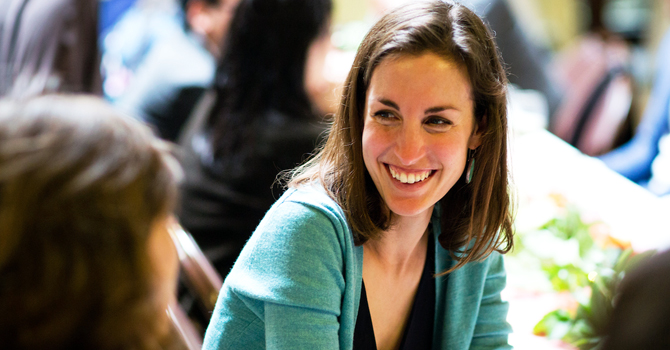Preventing Sickness and Injury: An Occupational Passion

Karin Dove, MPH '16, Occupational and Environmental Epidemiology
Data Consultant, Permanente Medical Group, San Francisco Bay Area
Data is a big part of helping people stay healthy. Explaining how that works is a big challenge and important to the future of public health. Statistics and epidemiological work are central parts of developing the solutions that keep everyone healthier because they are central to how we prevent sickness, disease, and injury up front.
We sometimes underestimate the value of public health because it is preventive. Demonstrating to a general audience the value of investing now for better health down the road can be very difficult. The better public health is working, the fewer negative health outcomes you see. But you have to be willing to invest up front rather than always responding to bad situations as they occur.
The better public health is working, the fewer negative health outcomes you see.
Michigan Public Health helped me become a better translator. I was in the Occupational and Environmental Epidemiology (OEE) program, where I was exposed to a wide variety of research and people across many disciplines. The Epidemiology Department at Michigan appealed to me because of the curriculum's strong foundation in epidemiology methods, robust coursework in practical areas like statistical programming and modeling, and the breadth of topics represented by the department faculty.
Professional collaboration is a big part of getting better at communication. The regular opportunities Michigan provided to work across disciplines improved my ability to communicate effectively with others in the field and the general public. From intro to epidemiology methods to analysis skills in biostatistics to environmental health, where I truly found a personal passion, my studies at Michigan made me want to create positive impacts in public health and the environment. I still rely on my epidemiology and biostatistics training in thinking about how to interpret data, how the data can tell a story of what is happening in the field.
I rely on my epidemiology and biostatistics training in thinking about how to interpret data, how the data can tell a story of what is happening in the field.
Public health practice regularly touches topics we see in the national news. I worked with Professor Rick Neitzel on the firefighters project as part of my work in the OEE program and also became involved with the Center for Occupational Health and Safety Engineering (COHSE), one of the nation's leading research and teaching centers in occupational health and safety. The work we did helped us increase our understanding of the effects of air pollution on cardiovascular health and take steps toward mitigating occupational stressors among firefighters.
I like knowing that the work I do has the ability to reach such a large group of people. Right now I work at Kaiser Permanente on an initiative called life care planning. We are helping people plan for future health care decisions in the event they become seriously ill. My role is to identify appropriate populations to focus on and to measure the care delivered to these patients. There are over 4 million people in the Northern California Kaiser Permanente Region, and my work has the potential to touch all of those lives in some way.
- Read more about epidemiology and environmental health science researchers.
